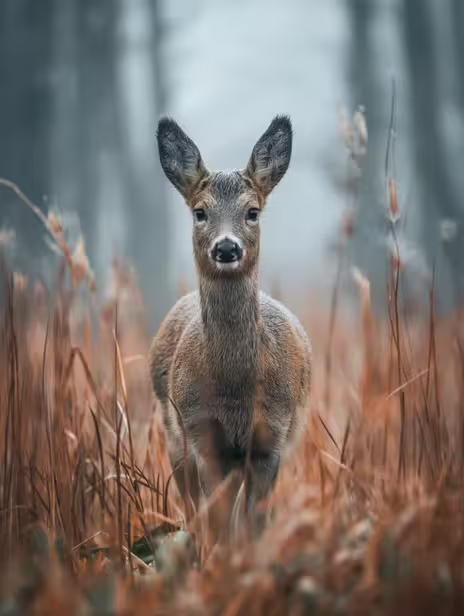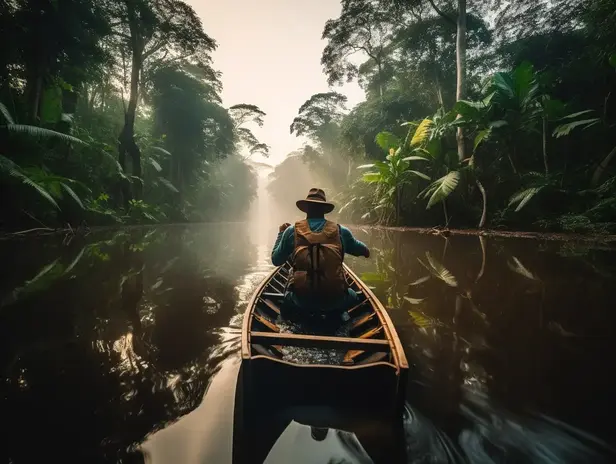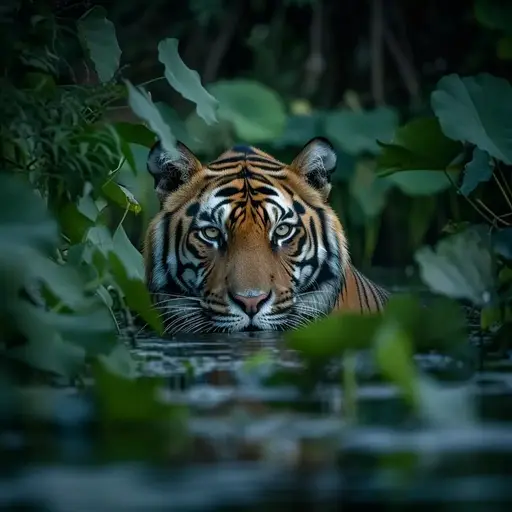About Sundarban National Park
Sundarban Mangrove Forest
About Sundarban National Park: Know About Sundarban National Park, a collection of low-lying islands in the Bay of Bengal dispersed throughout Bangladesh and India is renowned for its distinctive mangrove forests. Know About The Biggest Mangrove.
World's largest mangrove forest
What Is Sundarban National Park
Welcome to the Sundarbans, a breathtaking expanse of mangrove forests and waterways that form the largest estuarine forest in the world. This UNESCO World Heritage site is renowned for its rich biodiversity, unique ecosystem, and the majestic Royal Bengal Tigers. At Sundarban Tourism, we offer curated tours that allow you to immerse yourself in the unparalleled beauty and adventure that this region has to offer.
Biodiversity In Sundarban National Park
Due to its distinctive biodiversity, the Sundarban delta in India has been a priority area for WWF-India since 1973. Although it is home to more than 4.5 million people, it is also an environmentally fragile and climatically susceptible territory that supports a sizable population of wild tigers and other species. A long-term strategy that can incorporate climate adaptation and conservation strategies as well as shorter-term initiatives like ensuring sustainable livelihoods, access to clean and sustainable energy, and efficient human-wildlife conflict management is needed to secure the future of the Sundarbans, its biodiversity, and its inhabitants.
Where Is Sundarban National Park
The Sundarban forest, which covers an area of around 10,000 sq km, is shared by Bangladesh and India. Of the total forest area, 4,262 km2 are in India and the rest are in Bangladesh. The Sundarbans National Park is made up of the Indian portion of the Sundarbans forest. The national park, which is famous for having the largest mangrove forest in the world, has enough to offer both environment and animal enthusiasts. The entire forest is a magnificent scenery that should be seen and seen at least once in a lifetime because of the dense mangrove forest, the various river channels that crisscross the forest, the stunning estuaries, and the enormous number of Royal Bengal Tigers, and other exotic species. This park, which has been designated a UNESCO World Heritage Site, has its own allure to draw visitors to the area.
The Sundarban national park, which is famous for having the largest mangrove forest in the world, has enough to offer both environment and animal enthusiasts. The entire forest is a magnificent scenery that should be seen and seen at least once in a lifetime because of the dense mangrove forest, the various river channels that crisscross the forest, the stunning estuaries, the enormous number of Royal Bengal Tigers, and other exotic species. This park, which has been designated a UNESCO World Heritage Site, has its own allure to draw visitors to the area.
In West Bengal, an eastern Indian state, the Sundarbans National Park is located on the southern edge of the 24 Paraganas district. The mangrove plant known as Sundari inspired the name of the Sundarbans forest (Heritiera Minor). The Ganges, Brahmaputra, and Meghna rivers combine to form the biggest delta in the world, where the Sundarban forest is situated.
The Indian Sundarbans region is home to the country’s biggest National Park and Tiger reserve, covering around 2585 sq km. The mangrove forest covers around 2,125 sq km of the Sundarbans’ overall 4,262 sq km area, while the remaining space is taken up by the water bodies that dot the 56 islands that make up the forest.
India is fortunate to have a wide variety of plants and animals. Our country is renowned for its amazingly diverse physical landscape, which includes thick woods, ice glaciers, rich valleys, deserts, and palm palms scattered along silvery beaches. India’s remarkable history has inspired numerous authors to write about the country’s illustrious and extensive legacy.
Aside from these, other more stories, like Jakarta and Panchtantra, have focused on India’s fauna. India’s extensive animal habitat has a sombre effect on the surroundings and culture. Government of India has developed several specialised national parks and wildlife refuges where they may live and thrive without impacting humans in order to conserve and safeguard these natural riches.
History Of Sundarban National Park
The Royal Majestic Bengal Tigers call the History of Sundarbans National Park, which is spread over the Sundarban delta in the Indian state of West Bengal, home. This wonderful region spans an area of more than 10,000 square kilometres, including portions of Bangladesh and India. On May 4th, 1984, the Indian government declared The Sundarbans a national park, designating it as the official home of the renowned Royal Bengal Tigers.
250 tigers and a wide range of singing birds, reptiles, and other invertebrates, including crocodiles, are currently found in this exciting land. You are cordially invited to the enchanted kingdom of tiger worship if you choose to learn about the biodiversity of this region rather than only observe tigers.
Sunderbans’ history dates back to the period between 200 and 300 AD. The Sunderbans woods are thought to have been leased to the locals during the Mughal era, who thereafter established towns there. But in the following years, the Portuguese and salt smugglers in the 17th century assaulted those communities. Their ruins are all that is left now, and most of them may be found at a location named Netidhopani.
A significant portion of these woods was designated as “reserved” under the terms of the Forest Act, of 1865 (Act VIII of 1865) in 1875. Following independence, it was designated a wildlife sanctuary in 1977, and on May 4, 1984, it became a national park. The Sundarbans were designated as a national park in 1978 and a tiger reserve under Project Tiger in 1973.
Uniqueness Of Sundarbans Forest
The biggest mangrove forest in the world and one of the most ecologically appropriate for all natural ecosystems are found in Sundarbans National Park. The park essentially makes up the majority of Tiger Reserve, which was named a UNESCO World Heritage Site in 1987. It was eventually designated as a Ramsar site, a wetland of international significance, by the Indian government. Tigers live in just one mangrove forest in the entire globe. Currently, the park is home to the greatest number of tigers in the whole globe.
Geography of Sundarban Forest
The Sundarban’s distinctive landscape is one of the factors that attract tourists, among other things. It is a piece of the biggest delta in the world and is where the biggest mangrove forests are found. A staggering diversity of flora and wildlife may be found in its brackish seas, mudflats, and trees. These are what give this location its unique characteristics, combined with the greenery and the mystery that is revealed with each visit. The enormous Sunderban also houses within it rivers, islands and settlements.
Plants: A wide range of flora may be found inside the deep woods of Sunderban National Park. However, the 64 plant species that have been discovered have adapted to live in saline environments and brackish water. A few of the often-encountered plant species include the Sundari tree, Golpati, Champa, Dhundul, Genwa, and Hatal. These woodlands are thought to have 78 different types of mangroves. They are crucial to marine creatures’ existence, which makes them incredibly significant. These halophytes appear mysterious from a distance; who knows what the darkness within has to offer? Know More about Sundarban National Park.
Fauna: Wildlife tourism is a significant reason why people travel to the Sunderbans, and for good reason. You have heard that it is home to a diverse range of animals, with the Royal Bengal Tigers having a significant presence. The excitement of tourists is unmatched by tiger sightings. Other types of birds and creatures make these mangrove woodlands home, yet the beautiful cat unquestionably deserves all the glory.
Fishing cats, macaques, leopard cats, Indian grey mongoose, wild boar, flying fox, pangolin, and the Royal Bengal Tiger are among the various wildlife that may be found in these places. Rhesus monkeys and chital deer are frequently seen.
The marine life is fairly abundant in Sundarban, which is also well-known for it. Viewers’ reactions to a crocodile relaxing in the afternoon sun while lounging casually on a mudflat range widely. Other aquatic life forms, besides saltwater crocodiles, are red fiddler crabs and hermit crabs. The fact that there are several reptiles living in Sundarban National Park may not be widely known. Water monitors, king cobras, and rock pythons are a few of the more well-known species.
On Mechau Beach, you may see Batagur Baska river turtles, a species that the IUCN has listed as endangered. They may be recognized by their tiny head, nose that constantly points upward, and carapace colouration of olive-brown. A particular mention should also be made of the barking deer, which may be found on Haliday Island.
Rivers: The confluence of the Ganga, Brahmaputra, and Meghna rivers creates the Sundarbans delta. In addition to these three principal rivers, three other rivers combine to form a fascinating network of waterways.
Islands: This area is dotted with several islands, some of which are tourist destinations in and of themselves. Among them, Kalash, Henry, and Netidhopani are the most well-known.
Villages: Several villages, including Pakhiralay, Dayapur, Bali, and Sajnekhali, are adjacent to Sunderban National Park. Tourists enjoy village walks because they give them a chance to see how the locals live traditionally. You may see how honey is traditionally collected when visiting one of these communities.
How to Reach Sundarbans National Park
Visitors who intend to visit Sundarbans National Park may take advantage of guided excursions arranged by regional tour guides. The park has several entrances and is easily reachable from various regions of West Bengal. Visitors must travel to Kolkata, which has a very strong transportation network connecting it to important cities in India and internationally.
By Air:
The most practical and effective way to go to Sundarbans National Park is always by plane. The closest airport is Kolkata’s Netaji Subhash Chandra Bose airport. It is around 112 kilometres away from the Sundarbans. To charter a motor boat and travel to the Sundarbans region, tourists must proceed to Canning, Basanti, Gosaba, or any other launch station.
By Rail:
Canning and Seadalh are the closest train stations to Sundarbans National Park (South). Regular local trains run often, and the travel time is only 1.5 hours. To go to Canning station, travellers must board the train from Kolkata. From there, shared vehicles are available to transport you to the Sundarbans region’s mainland.
By Road:
Sundarbans National Park and Kolkata are connected by a well-designed road system. About 110 kilometres. total surface distance. From Sonakhali (100 km), Namkhana (105 km), Canning (64 km), Raidighi (76 km), and Najat (92 km), tourists may easily rent public transportation.
By Waterway-
The main form of transportation in the Sundarbans is via water. You may get to the Sundarbans forest and further explore it using just waterways by renting motorboats from the closest ports. The ports at Namkhana, Sagar Island, Sajnekhali, Sonakhali, and Raidighi provide motor launch services for rent.
Best time to visit Sundarbans National Park:
The rare and amazing Sundarbans National Park is renowned for being the world’s largest mangrove forest and the natural habitat of the Royal Bengal Tiger, one of the most ferocious and endangered predators in the wilds of the dense forest, as well as a wide variety of other wild species of different flora and fauna. For those who appreciate nature and animals alike, the estuary of the Sundarbans makes it a special and must-visit wildlife destination in India. The Sundarbans National Park is just as simple to visit as any other Indian tourist site.
If you’re using the train, there are frequent services from Sealdah to Canning. The trip takes the train an hour and a half. At Canning, you may take a private cab or a shared vehicle to get to Godhkhali Jetty, which is where the boat tour to the Sundarbans starts.
The roads and canals that connect the Sundarbans National Park to the nearby towns have been meticulously maintained by West Bengal’s tourist agency. The Godkhali port, which serves as the beginning point of the Sundarbans trip, is accessible by air, rail, or road for visitors to the Sundarbans National Park. The only way to go inside the Sundarbans forest is through water, thus from the Godkhali port, you may take a small or large boat to further explore the region’s fauna.
The park has good access to the local cities by roads, trains, and canals, and is also connected to the rest of the globe via airways. Visitors from all over the world come to this forest to take in the stunning scenery and peaceful delta land as well as the chance to see wild creatures. Watercraft that go over the different river channels that split the country into deltas may be used to explore the forest. Even though the park is available all year round for safaris, knowing when to visit Sundarbans National Park can help you organise your trip and make it more exciting and enjoyable.
Since the weather is more favourable during these days than at any other time of the year, the days between October and March are said to be the finest times to visit the Sundarbans National Park. The winter months are ideal for both a relaxing day excursion through the deep forest and improved wildlife sightings as they emerge from the forest and enjoy the sun on the riverbanks.
During your daytime safari, you may enjoy the boat safari in this lovely weather as well as the numerous native dishes that you will be served on the boat. Except for the winter, travelling during the other seasons is far less comfortable for the Sundarbans Safari for a variety of reasons.
Due to the extremely hot heat, which is intolerable throughout the day, the summer season is particularly uncomfortable. The worst vacation for you will be if you rent a non-AC boat in the summer since the intense heat waves you will experience on the deck will prevent you from taking in the breathtaking scenery and fantastic fauna. Due to the heavy rains that the Sundarbans experienced during the monsoon season and the consequently high water levels in the rivers that cut through the forest, going on a safari in tiny boats during this time can be quite dangerous.
Visiting Sundarbans During Summer (April to June):
The Sundarbans have exceptionally hot weather from April through June. The humidity is at its highest and the high temperatures, which range from 30 to 42 degrees Celsius, are intense. It is not recommended to visit the Sundarbans during the summer since the heat is so terrible for visitors.
Visiting Sundarbans During Monsoon (July to September):
The Sundarbans see significant rains from July to September during the monsoon season, raising the water level above average and making boat safaris dangerous. Although the rainy season provides the natural flora and wildlife with much-needed reprieve after the summer, this season is also not the best time to explore the Sundarbans.
Visiting Sundarbans During Winter (October to March):
Due to the excellent weather from October to March, this is the ideal season to explore the Sundarbans. The whole duration of the aforementioned period has excellent weather with moderate temperatures ranging from 10 to 30 degrees Celsius, except a few days of really cold weather. Without any trouble, you may take in the splendour of the untamed forest and the flora and animals of the Sundarbans.
What luxury experiences are available?
Royal Sundarban Tourism offers a range of luxurious experiences, including family-friendly activities, photography opportunities, and customizable dates. We also provide bonfire nights with cultural programs for a delightful and entertaining evening.
The climate of Sundarbans National Park:
Sundarban suffers extremely high humidity levels as a result of its closeness to the Bay of Bengal. During the monsoon, which lasts from mid-June to mid-September, there is a lot of rain. Fairweather lasts after the monsoons until mid-March.
The water helps to moderate the humid subtropical climate. Daily lows of 2-4°C in the winter increase to about 32°C during the monsoon and a peak of over 43°C in March. At the Jhingakhali meteorological station, the mean annual maximum and minimum temperatures were 34°C and 20°C, respectively.
Due to the proximity of the Bay of Bengal, there is a considerable amount of rain and the humidity ranges from 70 to 80 per cent. The average annual precipitation ranges from 1,800 mm in Khulna and 1,920 mm in Jhingakali, both of which are north of the Sundarbans, to 2002 mm at the observatory on the western coastal island of Sagar and 2,790 mm along the coast of Bangladesh. Saline soils are cleansed of their salt during the monsoon, which occurs between mid-June and October.
From that point until mid-March, when evapotranspiration outweighs precipitation, the weather is dry. Over half of the Sundarbans may be underwater during the monsoon. In February through April, when soil moisture is at its lowest and freshwater flows from upstream are at their lowest, conditions are at their most salinized.
The outlying islands started to erode between 1983 and 2003 because the yearly sea level increase was 3.14 cm compared to the global average of 2 cm. 40 per cent of the Sundarbans would be destroyed by a 25-cm sea level rise, and 75 per cent with a 45-cm increase by the end of the twenty-first century (Colette, 2007). Aquifer saltwater intrusion is exacerbated by rising sea levels.
From October through the middle of March, the predominant wind direction is from the north and northeast, while January and February are calm. However, from mid-March to September, there are strong southwesterlies that dominate.
In May and from October to November, storms that are funnelled up the shallow upper Bay of Bengal are common. Sometimes these storms intensify into cyclones that can be accompanied by storm surges up to 7.5 metres high, causing catastrophic loss of life, damage to property, and destruction of forests, as in 1970 and 1991.
Although less severe than in Bangladesh, the consequences of the 2004 tsunami, the mid-year monsoon floods, and Cyclone Sidr in November 2007, were terrible in India.
Over 5,000 people lost their lives as a result of the cyclone’s 220 kph gusts and 6.5 m storm surge, which also damaged or destroyed one million homes, animals, rice crops, forests, and the fishing sector (Bangladesh Forest Department, 2008; Indian Water Portal Blog, 2007). Such storms strikingly highlight the protective role of the coastal forest as well as the Sundarbans’ susceptibility to the consequences of climate change.
Tourist Attractions in and around Sundarbans National Park:
One of the most captivating tourist sites in India’s eastern region is the Sundarbans National Park, an unconquerable realm of Royal Bengal tigers, especially for those who enjoy animals and the outdoors. Here are a few tourist attractions in and near the national park that you might want to see while you’re there.
Sajnekhali Bird Sanctuary:
The only location to stroll in the Sundarbans forest is the Sajnekhali Bird Sanctuary, which is located on land between the Peechkali and Gomati Rivers. The Sajnekhali bird sanctuary, which is next to the Sundarbans tiger reserve, is home to a wide variety of bird species, including herons, egrets, kingfishers, sandpipers, plovers, whipples, sea eagles, curfews, and others. In this sanctuary, there is also a Mangrove interpretation centre.
Sajnekhali Watchtower:
The Sajnekhali watchtower, which is strategically located on Sajnekhali Island to view a significant portion of the forest, is the second most well-known watchtower in Sundarbans Park after the Sudhanyakhali. In addition to a crocodile park, a museum, and the Bonobibi shrine inside the boundaries of the watch tower property, it is an interesting tourist destination. You may obtain the forest office’s authorization to go to other Sundarban forest regions here as well.
Sudhanyakhali Watchtower:
The Sudhantyakhali watchtower, which is the most well-known in the Sundarbans region, is well-positioned in the heart of the tiger reserve area. It is a fantastic location from which to observe the majority of the tiger reserve region. From this watchtower, one can also see several tigers as well as other local wildlife, including axis deer, crocodiles, and other species. Being a huge watchtower, it can accommodate around 25 people at once so they may take in the beautiful surroundings.
Near the watchtower, a huge area free of any vegetation and a large pond allows for the magnificent sight of tigers and other animals visiting the pond to drink water. Animals may be seen plainly from a distance since there isn’t any foliage.
More watchtowers besides the Sajnekhali and Sudhanyakhali provide breathtaking views of the majestic Bengal tigers, including Netidhopan, Haldi, and others.
Bhagbatpur Crocodile Project:
The unique Bhagbatpur Crocodile Project is a crocodile breeding facility situated in the Sundarbans’ Bhagbatpur region. It is referred to as the world’s largest estuary crocodile hatchery. The Namkhanaand is a short distance away from this location.
Piyali Island:
Piyali Island, often known as the entrance to the Sundarbans, is located in the Sundarbans 72 kilometres from Kolkata, the capital of West Bengal. This location, which was built as a tourist complex to promote tourism in and around the Sundarbans National Park, is adjacent to Sajnekhali. Here, one may enjoy the peace of nature while strolling through the area, enjoying a boat trip, and taking in the village life. The Matla River and Piyali River meet in the middle of the island.
Lothian Island Wildlife Sanctuary:
Easily accessible from Namkhana, the Lothian Island Wildlife Sanctuary is situated on a 38 sq km tiny island. The Namkhana Range Office or DFO (South Division) of 24-Parganas can provide you a permit to visit this island. Numerous bird species, including the Black-Capped Kingfisher, Curlew, White-Bellied Sea-Eagle, Tern, and Whimbrel, may be found on Lothian Island.
However, since there are no tigers on this island, it is a favoured destination for those who enjoy the outdoors since they can stroll through the mangrove-dominated flora without worrying about coming across a tiger. There are several venomous and non-poisonous snakes on this island, along with wild boar, fishing cats, spotted deer, jackals, crocodiles, and even genetic dolphins. This island offers a magnificent view of the sunset.
Chulkati & Dhulivasani:
In the Sundarbans, the forest of Chulkati and Dhulivasani, which is next to Kalas Island, is well-known for its variety of species. It provides wonderful views of nature, similar to those seen in the Sundarbans, thanks to the numerous rivers that traverse a 462 sq km region. You can get a full view of the surrounding flora and animals from a 53-foot-high watchtower that is tucked away in the Ramganga range of the Sundarbans forest. You will also see deer, wild boar, monkeys, water monitor lizards, and different bird species in addition to the tiger.
Hiran Point:
The Hiran Point, which is situated at the southern edge of the Sundarbans, is encircled by lovely water features on three sides and provides you with a fantastic perspective of the area.
Halliday Island:
A popular tourist destination and well-known for being the home of the barking deer is Halliday Island, which is also situated on the southern border of the Sundarbans.
Holiday Island Wildlife Sanctuary:
The Holiday Wildlife Sanctuary, one of three wildlife sanctuaries that contribute to the Sundarbans Biosphere Reserve, is situated on Holiday Island and has a total area of 6 square kilometres. The Holiday Island, which is home to spotted deer, barking deer, and other species, is situated on the bank of the Malta River. On this Island, there are sporadic sightings of regal Bengal tigers.
Tin Kona Island:
The Sundarbans National Park’s magnificent Tin Kona Island is the ideal location to see tigers and deer in their natural habitat.
Sundarban At A Glance
- The Sundarban Reserve Forest in Bangladesh is located next to Sundarban National Park, which is a section of the Ganges Delta’s Sundarbans.
- the delta created by the confluence of the Ganga, Brahmaputra, and Meghna rivers. In addition to these three, three additional rivers make up the fascinating delta network of waterways. More information on Sundarban National Park
- There are 54 little islands in the park.
- The Park is 7.5 metres above sea level on average.
- In the area around the park, the average lowest and maximum temperatures are 20°C and 48°C, respectively.
- The delta is one of the biggest refuges for Bengal Tigers and is heavily covered with mangrove forests.
- About 1355 kilometres are covered by the Sundarban National Park.
- The woodlands of Sundarbans National Park are home to a wide variety of plants and animals.
- In these woods, there are thought to be 78 different kinds of mangroves. Plants like the Sundari tree, Golpati, Champa, Dhundul, Genwa, and Hatal are some of the most popular species.
- It is quite challenging for plants to survive in brackish and saline water. There are still roughly 64 species of plants that have figured out how to endure in these circumstances.
- Numerous bird, reptile, and invertebrate species live there as well, including saltwater crocodiles.
- The current Sundarban National Park was designated as a wildlife sanctuary in 1977 and the central portion of the Sundarban Tiger Reserve in 1973.
- It was designated a national park on May 4th, 1984. It was listed as a UNESCO World Heritage Site in 1987 and has been a Ramsar site since 2019.
- Since 1989, it has been regarded as a member of the World Network of Biosphere Reserves (Man and Biosphere Reserve).
- The Sundari tree gave the region of Sundarban its name.
- More than 400 tigers are living in the Sundarban jungle.
- The Royal Bengal tigers are renowned for their propensity for man-eating and have an unusual trait of swimming in saltwater.
- Between November and February, tigers can be observed relaxing on the banks of rivers.
- In addition to the Bengal tiger, the Sundarbans are also home to a large number of foxes, jungle cats, flying foxes, macaques, wild Boers, Indian grey mongooses, fishing cats, leopard cats, and macaques.
- The park is home to a variety of aquatic creatures, including sawfish, butterfish, electric rays, silver carp, starfish, common carp, etc.
- On Mechau Beach, you may see Batagur Baska river turtles, a species that the IUCN has listed as endangered.
- The marshy habitat of the Sundarban is ideal for a variety of reptiles, including estuarine crocodiles, chameleons, monitor lizards, turtles, and others.
- A recent economic evaluation determined that the Sundarbans National Park generates flow benefits valued at 12.8 billion (about 50,000 per hectare of land) yearly.


The Unique Landscape of the Sundarbans
Discover the Enchanting Sundarbans: A Natural Wonderland
The Sundarbans, an intricate network of mangrove forests, tidal waterways, and small islands, is a unique and mesmerizing region located in the delta of the Ganges, Brahmaputra, and Meghna rivers on the Bay of Bengal. Spanning across India and Bangladesh, the Sundarbans is the largest mangrove forest in the world and a UNESCO World Heritage Site, offering an unparalleled experience for nature enthusiasts, adventure seekers, and those looking to escape into the serenity of untouched wilderness.

The Sundarban National Park, located in the delta region of West Bengal, India, is one of the most renowned wildlife sanctuaries in the world. It is celebrated for its vast mangrove forests, diverse ecosystem, and unique wildlife, including the iconic Royal Bengal Tiger. The park is a UNESCO World Heritage Site and offers visitors the opportunity to explore its rich biodiversity through boat safaris, nature walks, and birdwatching tours.
The Sundarban National Park is famous for its population of the Royal Bengal Tiger. It is one of the largest reserves for this magnificent big cat, known for its adaptation to the mangrove habitat and swimming prowess.
The Sundarban National Park is a UNESCO World Heritage Site located in the Sundarbans delta in West Bengal, India. It is renowned for its mangrove forests, which are home to diverse flora and fauna, including the endangered Royal Bengal Tiger. The park is a haven for wildlife enthusiasts, offering opportunities for boat safaris, birdwatching, and nature walks.
- Sundarban National Park is the largest mangrove forest in the world.
- It is home to the Royal Bengal Tiger, saltwater crocodile, and various species of birds.
- The park is spread across India and Bangladesh, covering an area of approximately 10,000 square kilometers.
- Sundarban National Park is a UNESCO World Heritage Site, recognized for its unique ecosystem and biodiversity.
- It is a Ramsar Site, designated for its importance as a wetland habitat.
- The park is accessible via boat safaris, allowing visitors to explore its waterways and dense forests.
- Sundarban is prone to natural disasters like cyclones and tidal surges due to its coastal location.
- The mangrove forests of Sundarban act as a natural barrier against coastal erosion and protect nearby communities from storms.
Sundarban National Park is located in the state of West Bengal, India.
Sundarban National Park was established in the year 1984.
- Sundarban National Park is located in the Sundarbans delta region of West Bengal, India.
- It is the largest mangrove forest in the world and a UNESCO World Heritage Site.
- The park is home to the Royal Bengal Tiger, saltwater crocodile, and various species of birds.
- Sundarban is characterized by its unique ecosystem, with dense mangrove forests, tidal waterways, and mudflats.
- Boat safaris are a popular way to explore the park and its diverse wildlife.
- Sundarban National Park is a Ramsar Site, recognized for its importance as a wetland habitat.
- The park is also known for its cultural significance, with indigenous communities living in the region.
- Sundarban faces threats from climate change, habitat loss, and human-wildlife conflict.
- Conservation efforts are underway to protect the fragile ecosystem of Sundarban National Park.
- Visiting Sundarban offers a chance to witness nature’s beauty and experience the rich biodiversity of the region.
Sundarbans National Park is located in the Sundarbans delta region of West Bengal, India.


Majestic
Cultural Heritage
The human presence in the Sundarbans dates back centuries, with local communities living in harmony with the natural environment. The indigenous people of the Sundarbans, known as the “Mawalis,” have a rich cultural heritage and rely on traditional practices such as honey collection and fishing. Their way of life is intricately connected to the rhythms of the forest and tides, and their folklore and rituals reflect a deep reverence for nature.
Primeval
Exploring the Sundarbans
A visit to the Sundarbans offers a range of activities and experiences that cater to various interests and preferences. Here are some of the highlights:
Timeless
Boat Safaris
One of the best ways to explore the Sundarbans is by embarking on a boat safari. Navigating through the narrow creeks and wide rivers, visitors can witness the diverse wildlife and stunning landscapes up close. The silence of the waterways, broken only by the sounds of nature, creates an immersive and tranquil experience.
Riveting
Trekking and Jungle Walks
Guided treks and jungle walks provide an opportunity to venture deeper into the mangrove forests. Accompanied by experienced guides, visitors can explore the unique flora and fauna, learn about the ecological significance of the mangroves, and perhaps even spot signs of the elusive tiger.
What we offer
The Ultimate Family Sundarban Tour Package
Our package caters to families of all ages, ensuring there’s something for everyone to enjoy. Whether it’s exploring lush mangrove forests, spotting majestic Royal Bengal Tigers, or discovering vibrant birdlife, every activity is designed to spark joy and wonder in every family member.
Bird Watching
The Sundarbans is a paradise for bird watchers. Early morning and late afternoon are the best times to observe the myriad bird species that inhabit the region. From vibrant kingfishers to majestic raptors, the avian diversity is truly spectacular.
Cultural Experiences
Engaging with the local communities adds a cultural dimension to the Sundarbans experience. Visitors can participate in traditional activities such as honey collection and fishing, witness folk performances, and savor the flavors of local cuisine.
Photography
The Sundarbans offers endless opportunities for photography enthusiasts. The interplay of light and shadow in the dense mangroves, the reflections on the water, and the chance to capture rare wildlife make it a photographer's dream destination.
Eco-Tourism Initiatives
Several eco-tourism initiatives in the Sundarbans focus on sustainable travel practices and conservation efforts. These initiatives aim to minimize the impact on the environment while providing visitors with a meaningful and responsible travel experience.
Delectable Dining
Savor the flavors of the Sundarbans with our delectable meals included in the package. From traditional Bengali delicacies to continental favorites, our culinary offerings are sure to tantalize your taste buds and keep your family energized for the adventures ahead.
Safety and Security
Your family's safety is our top priority. Rest assured, our experienced guides and staff are committed to ensuring a safe and enjoyable experience for all.
Company Value
Welcome to Royal Sundarban Tourism
Royal Sundarban Tourism, your leading tour company, will take you on an exciting adventure through one of the world’s most unique ecosystems. Our painstakingly prepared trips blend luxury, comfort, and local culture to provide an enriching and unforgettable experience for all of our clients.
Vision
Royal Sundarban Tourism's objective is to create extraordinary and immersive travel experiences that highlight the Sundarbans' natural beauty and rich cultural heritage. We are committed to providing luxury, pleasant, and environmentally friendly excursions that meet the different demands of our clients.
Mission
Our mission at Royal Sundarban Tourism is to be the top supplier of Sundarban tours, known for our exceptional service, sustainability, and cultural immersion. We want to inspire a global audience to see and appreciate the Sundarbans, promoting responsible tourism that benefits local communities and protects the region's unique environment for future generations.
Enchanting Landscape
The Sundarbans captivates with its ethereal landscape, where towering mangrove trees rise from the brackish waters, creating a haven for a myriad of wildlife. Here, the ebb and flow of the tides dictate the rhythm of life, shaping a unique ecosystem that thrives on the edge of land and sea.
Wildlife Sanctuary
Royal Sundarban Tourism is a fully certified travel agency, officially registered with the West Bengal Government. Our certifications and accreditations are a testament to our commitment to providing high-quality, reliable, and safe travel experiences.
Cultural Tapestry
Beyond its natural splendor, the Sundarbans is a tapestry of human culture and tradition. Indigenous communities, such as the Mawalis, have coexisted with the wilderness for generations, weaving their customs and rituals into the fabric of the forest. Visitors are invited to immerse themselves in this rich heritage, from partaking in traditional fishing expeditions to savoring local delicacies prepared with age-old recipes.

testimonial
What they say about us
Uncover the mysteries of the Sundarbans with Royal Sundarban Tourism – where every journey is an unforgettable adventure.


Your Sundarbans Adventure Awaits
Join us on a voyage of exploration and wonder as we delve into the depths of the Sundarbans. With Royal Sundarban Tourism, every step is a revelation, every encounter a treasure. Whether you seek adventure, serenity, or simply a glimpse of the extraordinary, let the Sundarbans be your ultimate destination.
CAll Mr Dilip Maity
Best Sundarban Tour Operator In Kolkata

আর দেনি না করে কল টা করেই ফেলুন আমায় , “আমাকে কল করুন এবং আমি ব্যক্তিগতভাবে সমস্ত বিস্তারিত ব্যাখ্যা করব“

